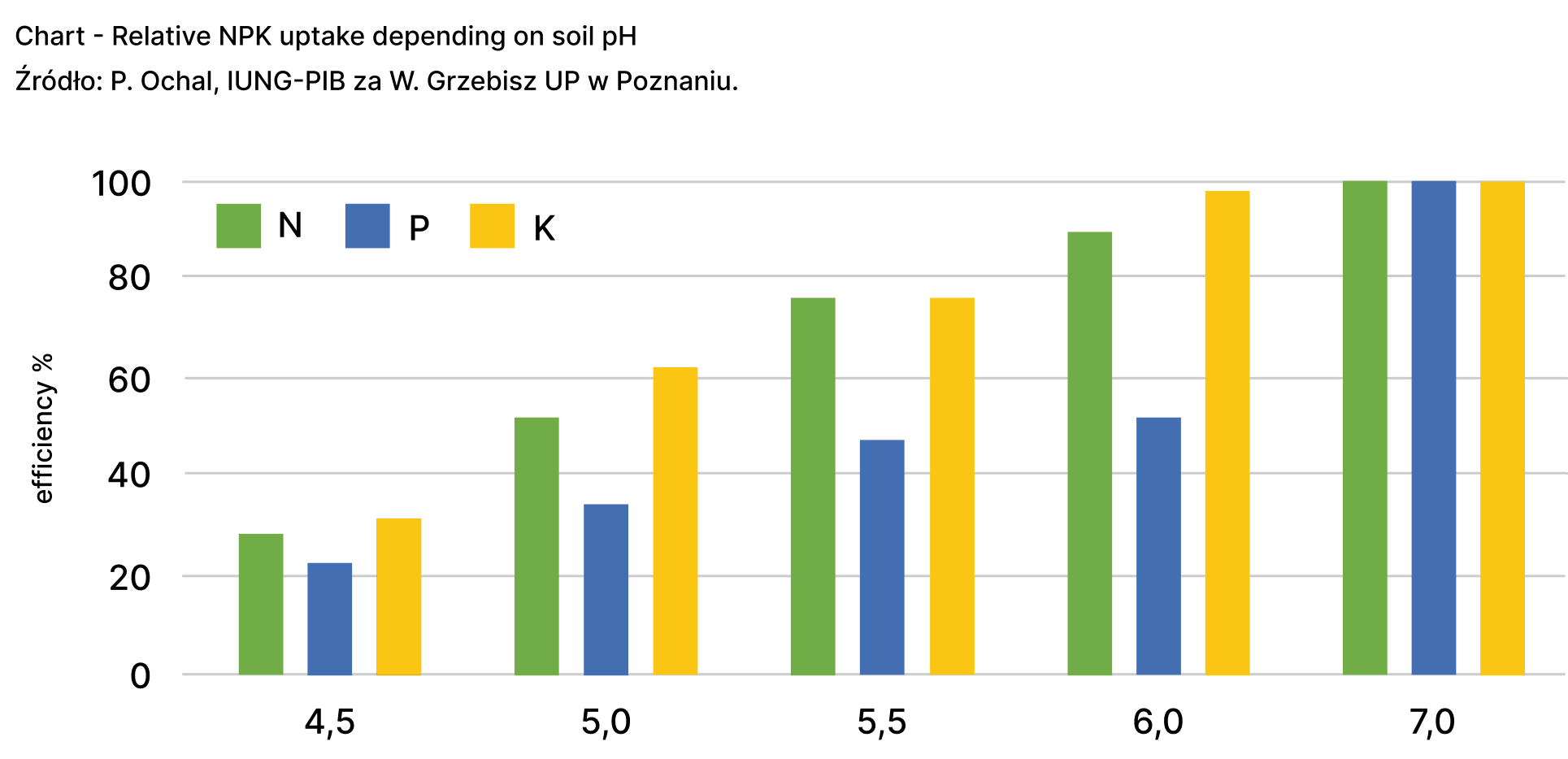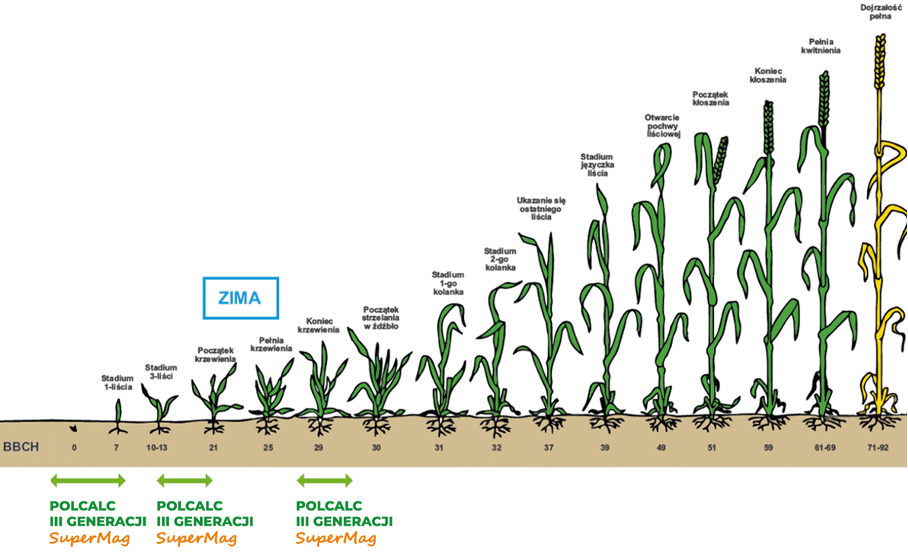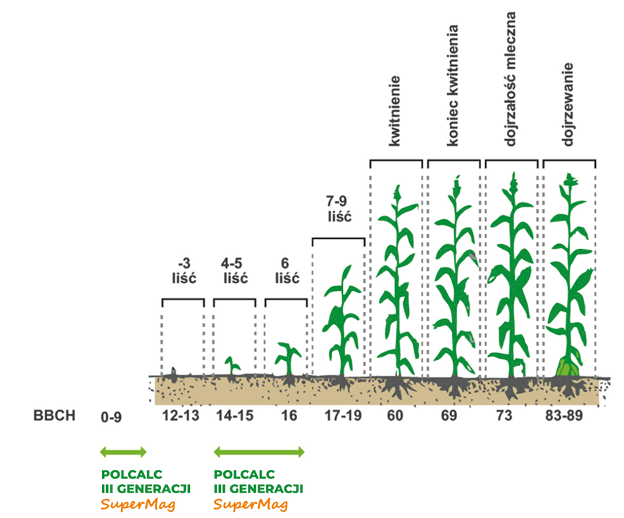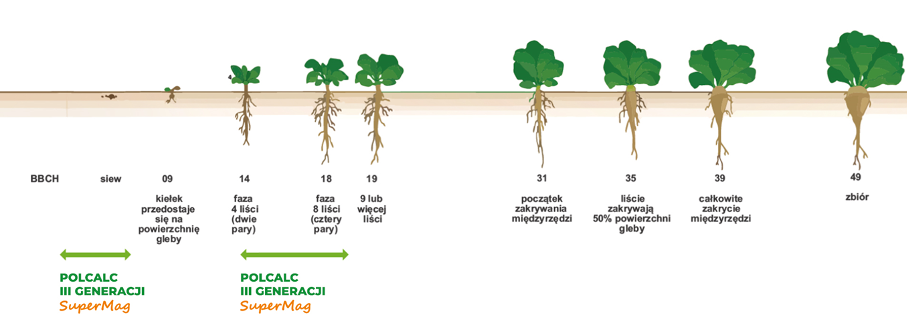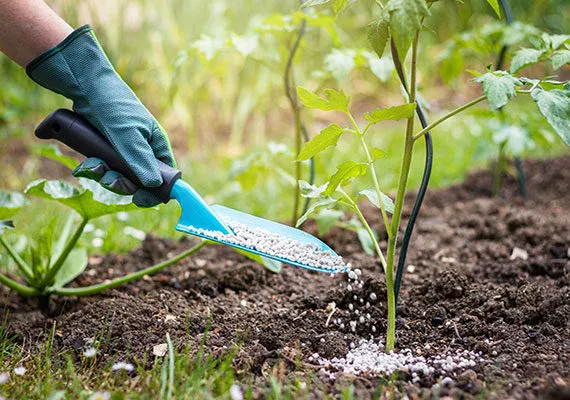
Agriculture is an important sector of the national economy, generating approximately 2.2% of the Polish GDP, i.e., PLN 58,356 million (Statistical Yearbook of the Republic of Poland 2022). This amount could be significantly higher if the pH of Polish soils were improved, as 9.4 million hectares of agricultural land require liming. It is estimated that due to soil acidification, Polish family farms lose between 2 to 4 billion PLN annually. These are only the costs associated with lower efficiency of NPK utilization by plants (Fig. 1).
These estimates do not include losses due to lower crop yields of cultivated plants, most of which require slightly acidic soils. Inappropriate soil pH leads to yield reduction, the extent of which depends on the plant species and soil pH. It can range from 5% to 100% of the relative plant yield (Hałubowicz-Kliza 2006, Pietr and Krysztoforski 2022). Additionally, unused macronutrients are leached or washed away from the soil surface by precipitation and enter groundwater, then rivers, lakes, and seas causing eutrophication (Pietr and Krysztoforski 2022). To prevent these adverse effects, it is necessary to maintain the proper pH of agricultural soils through systematic liming. As noted by Pietr and Krysztoforski (2022), the commonly used liming model every 3-4 years leads to sinusoidal fluctuations in soil pH, causing biological, chemical, and physical disturbances in soil functions. Maintaining soil pH at a constant level, minimum pH 6.0, ensures efficient utilization of mineral elements, proper development of the root system (preventing the release of aluminum ions into the soil), and contributes to the proper development of soil microorganisms responsible, among other things, for increasing organic matter content in the soil, which retains rainwater used by plants during dry periods.
„Agronomic recommendations (IUNG-PIB) aim to divide the lime dose and apply it successively during subsequent agronomic treatments and in subsequent seasons” (Pietr and Krysztoforski 2022). To implement the described liming strategy, it is advisable to use Polcalc III Generation granulated lime or SuperMag – granulated magnesium lime (in case of low magnesium content in the soil). The mentioned limes can be applied pre-sowing and topically at rates of 400-1000 kg∙ha-1. Research conducted by Polcalc Calcium Fertilizers Ltd. in 2016 showed a significant impact of topdressing with granulated lime on the yield of wheat, rapeseed, maize, and sugar beets. Optimal timings for applying granulated lime produced by Polcalc are presented in the figures (Fig. 2-5). Our fertilizers contain calcium and magnesium in a carbonate form that is completely safe for plants. They can be applied topically even on moist plants. When using Polcalc III Generation or SuperMag topically, remember to observe a 3-week break between these fertilizers and other fertilizers containing phosphorus and nitrogen in the ammonium form.
For detailed information about our fertilizer products and their beneficial effects on soil properties, please contact our hotline at 880-880-801. We also encourage you to contact our sales representatives and distributors of our fertilizers, whose current list can be found on our website (www.polcalc.pl).
